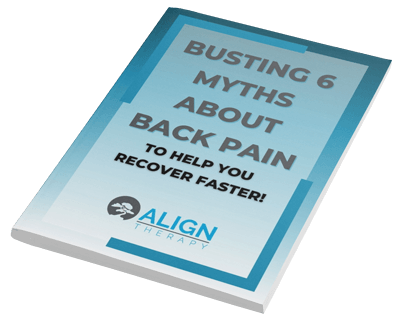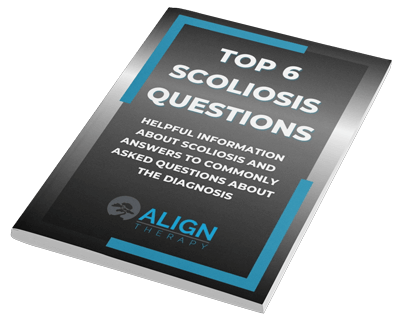Every June, Scoliosis Awareness Month shines a spotlight on a condition that affects millions worldwide, aiming to educate and empower those living with scoliosis. This annual event serves as a crucial platform for raising awareness about the complexities of spinal curvature disorders, offering valuable insights and resources to both newly diagnosed individuals and those who have been managing the condition for years. With a focus on understanding the latest treatment options, sharing personal stories, and promoting early detection, Scoliosis Awareness Month encourages a supportive community dialogue. Join us as we delve into the essential aspects of scoliosis, uncovering the tools and knowledge that can help enhance the quality of life for those affected. If you’re looking for personalized guidance, consider scheduling a free consultation with our experienced team.
Understanding Basics in Scoliosis Awareness Month
Scoliosis is a complex condition that affects the spine, and understanding its fundamentals is crucial for those affected and their loved ones. Let’s explore the definition, causes, and symptoms of scoliosis to build a solid foundation of knowledge.
What is Scoliosis?
Scoliosis is a medical condition characterized by an abnormal curvature of the spine. Unlike the natural curves in a healthy spine, scoliosis causes the spine to curve sideways, often resembling an “S” or “C” shape when viewed from behind.
This condition can affect people of all ages but is most commonly diagnosed during adolescence. The severity of scoliosis can vary greatly, from mild cases that require minimal intervention to more severe cases that may impact daily life and require intensive treatment.
Understanding scoliosis is the first step towards effective management. If you suspect you or a loved one might have scoliosis, reaching out to a specialist can provide clarity and guidance on the next steps.
Common Causes and Risk Factors
The causes of scoliosis can be diverse, and in many cases, the exact cause remains unknown. However, researchers have identified several factors that may contribute to its development:
- Idiopathic Scoliosis: This is the most common type, accounting for about 80% of cases. The term “idiopathic” means the cause is unknown, though genetics may play a role.
- Congenital Scoliosis: This type is present at birth due to abnormal formation of the spine during fetal development.
- Neuromuscular Scoliosis: This form is associated with conditions that affect the nerves and muscles, such as cerebral palsy or muscular dystrophy.
Risk factors for scoliosis include family history, age (onset is often during growth spurts), and gender (girls are more likely to develop severe curvatures).
Signs and Symptoms to Watch
Recognizing the signs of scoliosis early can lead to more effective treatment. Here are key symptoms to be aware of:
- Uneven shoulders or waist
- One hip appearing higher than the other
- Clothes hanging unevenly
- Visible curve in the spine when bending forward
In some cases, individuals with scoliosis may experience back pain, especially in adults. However, pain is not always present, particularly in milder cases or in younger patients.
If you notice any of these signs, it’s important to consult a healthcare professional. Early detection can make a significant difference in treatment outcomes and quality of life.
Navigating Scoliosis Awareness Month
Scoliosis Awareness Month in June provides a valuable opportunity to learn, connect, and support those affected by this condition. Let’s explore why this month is so important and how you can get involved.
Importance of Awareness and Education
Scoliosis Awareness Month plays a crucial role in spreading knowledge about this often misunderstood condition. By increasing public understanding, we can foster a more supportive environment for those affected.
Education is key to early detection and intervention. Many people are unaware of the signs of scoliosis, which can lead to delayed diagnosis. By raising awareness, we can help ensure that more cases are caught early when treatment is often most effective.
This month also helps to dispel myths and misconceptions about scoliosis, providing accurate information to the public. It’s an opportunity to highlight the latest research and treatment options, giving hope to those living with the condition.
Resources and Support Networks
Scoliosis Awareness Month brings attention to the wealth of resources available for those affected by scoliosis. Here are some key support networks and resources:
- Scoliosis Research Society: Offers comprehensive information and research updates.
- National Scoliosis Foundation: Provides support groups and educational materials.
- Curvy Girls Scoliosis: A peer-led support group for young girls with scoliosis.
Local support groups and online forums can also be invaluable for sharing experiences and advice.
Remember, you’re not alone in this journey. Reaching out to these networks can provide emotional support, practical advice, and a sense of community.
Exploring Treatment Options
When it comes to managing scoliosis, there’s no one-size-fits-all approach. Treatment options vary depending on the severity of the curve, the age of the patient, and other individual factors. Let’s explore some effective treatment approaches, with a focus on physical therapy.
Benefits of Physical Therapy
Physical therapy plays a crucial role in scoliosis treatment, offering numerous benefits for patients of all ages. Here’s why it’s such an effective approach:
- Improved Flexibility: Physical therapy exercises can help increase spine flexibility, reducing stiffness and discomfort associated with scoliosis.
- Strengthened Core Muscles: A strong core provides better support for the spine, potentially slowing curve progression.
- Pain Management: Targeted exercises and manual therapy techniques can significantly reduce pain and improve quality of life.
Physical therapy also educates patients about proper posture and body mechanics, empowering them to manage their condition more effectively in daily life.
For personalized guidance schedule a free a discovery visit today. You’ll get to speak with one of our expert team 1 on 1 to discuss the best next steps for you.
Click here or call (801) 980-0860 to book your free visit!
More Free Resources:
Read our blog – Discover the Benefits of Physical Therapy for Managing Adult Scoliosis – Align Therapy Clinic, Utah
Check out what others are saying – Google Reviews
Learn more about us – Meet the Team



